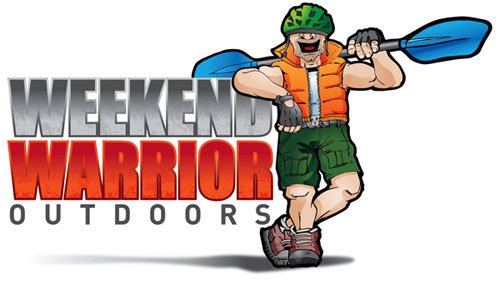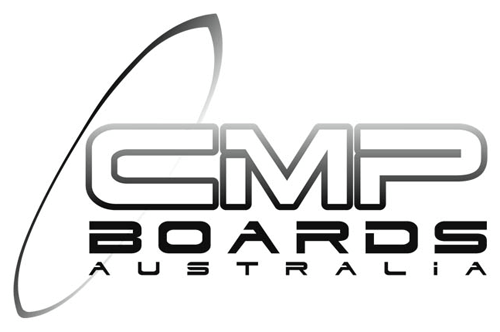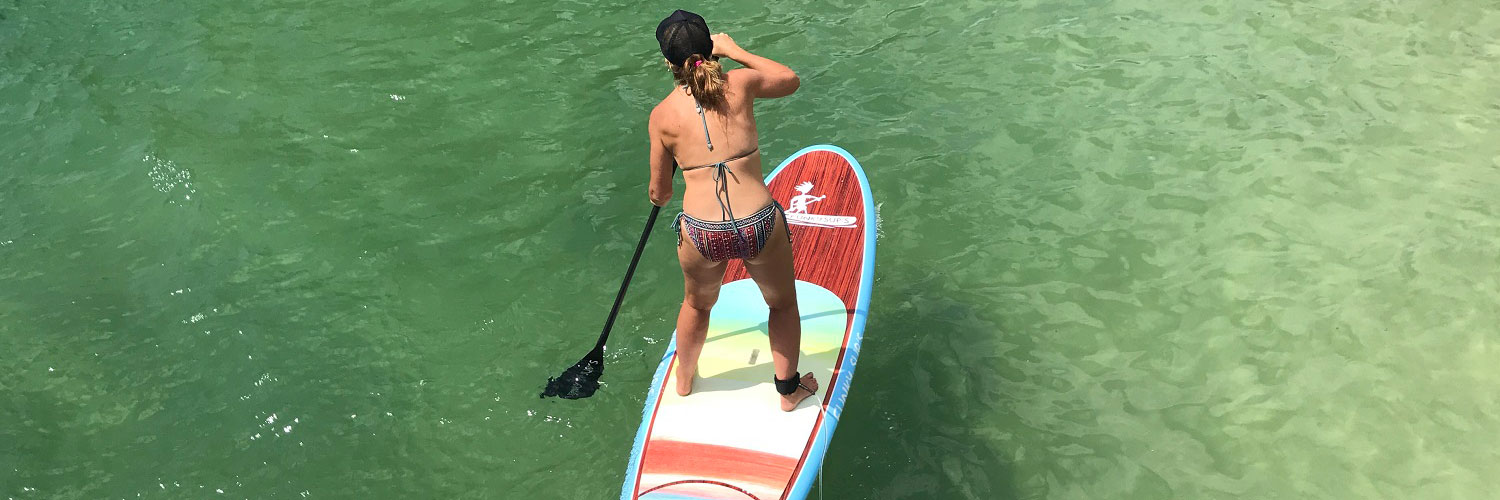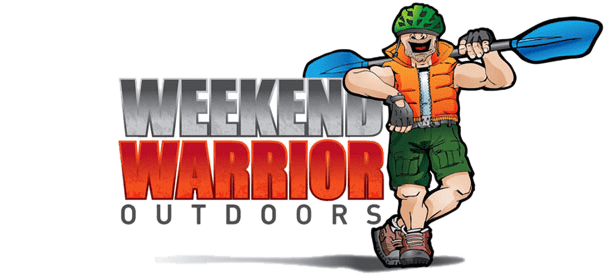
Picking Out the Right Beginner Paddle Board
Paddle boarding is a lot of fun, and if you’re considering getting into the sport, you’ll need a paddle board suitable for a beginner. There are a lot of choices, though, so you may be wondering how to choose a beginner paddle board. Well, to find a good beginner stand-up paddleboard or SUP, you need to look for stability, construction, and versatility.
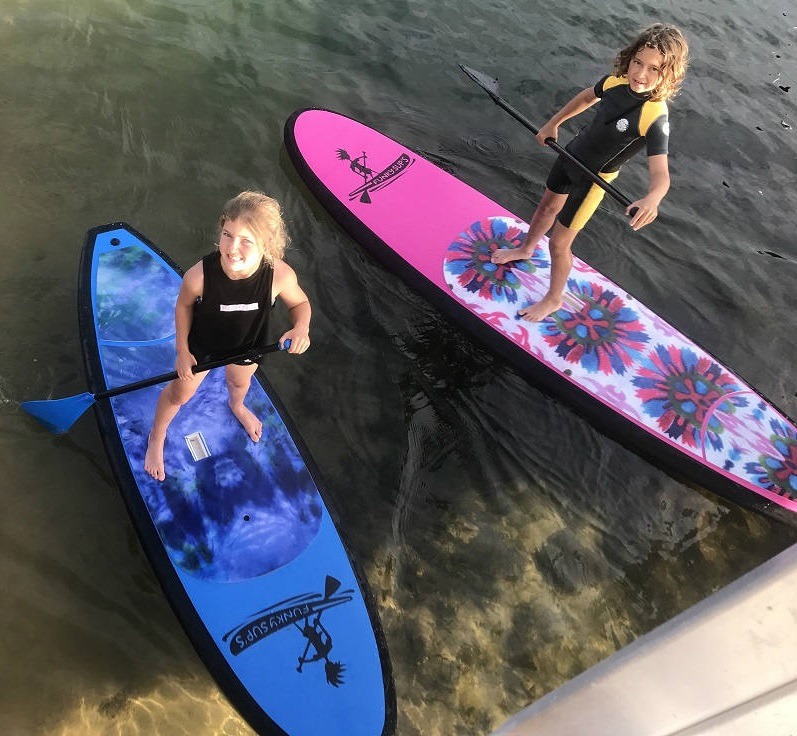
Board Stability
As a beginner, it is vital to look for a board with plenty of stability. Otherwise, you’re not going to have an easy time standing up and remaining stable. There are three factors that make for a stable board: length, width, and volume. Long, wide boards are difficult to tip, and boards with extra volume are especially buoyant, giving them a smoother ride. Keeping in mind though that too big can be hard to man handle and also turn. So not always the biggest is the best.
Beginner SUPs should be at least 10 feet long; if you’re bigger than average, go for something that’s up to 12 feet (in an all rounder shape). You need a 32-inch width for boards around the 10 feet mark, but bigger people should go for 33 inches for a board 11 to 12 Feet in length. As far as volume goes, look for 175 L if you’re buying a hardboard or a soft top, and about 250 L if you’re buying an inflatable.
Just remember the right size board with plenty of volume will make for better glide and stability on the water.
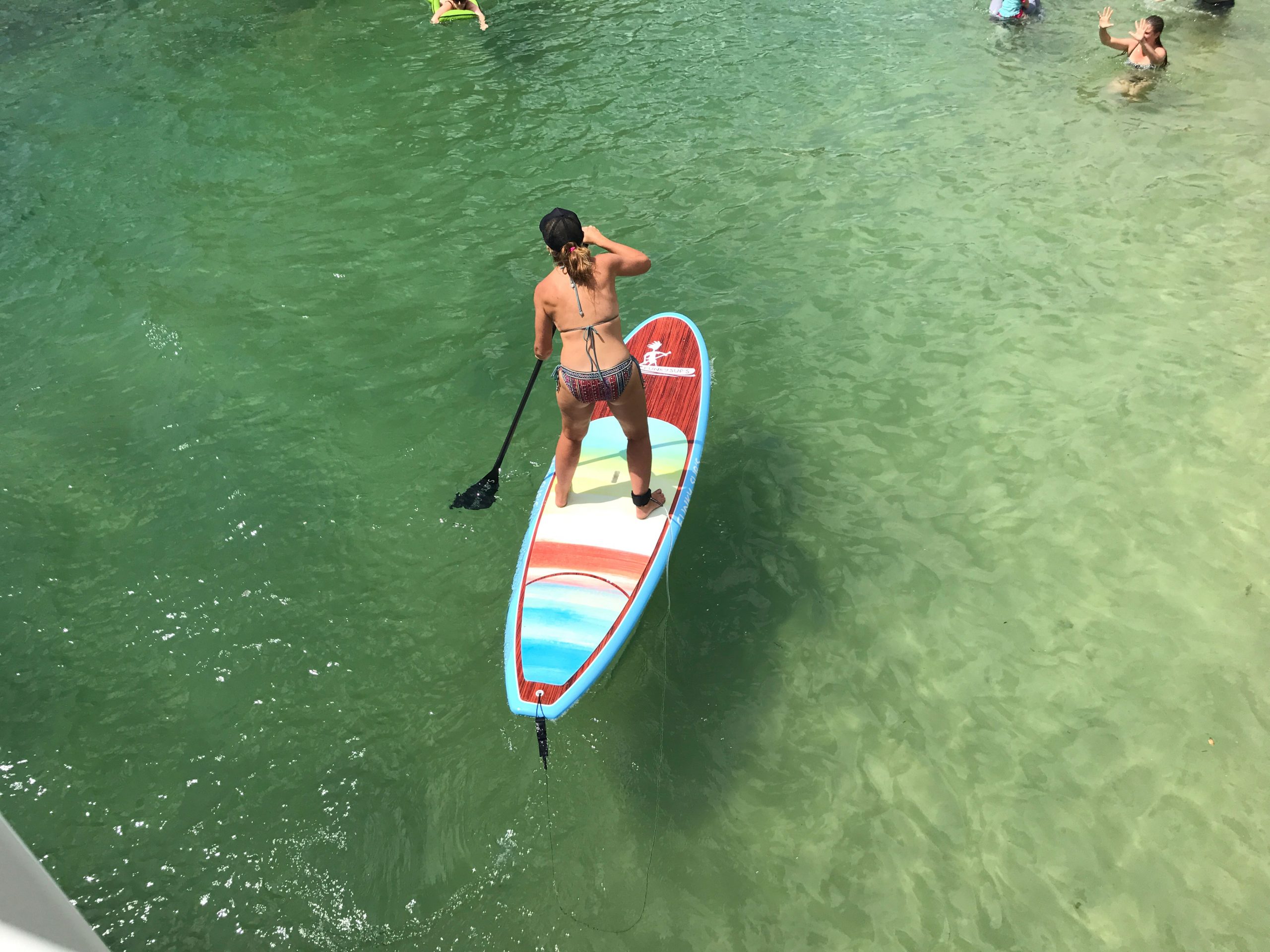
Board Construction
There are three main types of paddle board, each one suitable for different purposes.
The hard board, made of epoxy, is the traditional type of paddle board. This is the kind of board to get if you want perfect performance, as in simple terms these glide and turn easily on the water. A SUP which is easy to use and will get you moving effortlessly through the water. The major disadvantage is that you need room to store a hard board. Many people upgrade from inflatable, finding the effort to pump and deflate each time too much trouble. This type of hard paddleboard is the board to grab and go with no time wasted.
Soft top boards are the way to go for paddle boarders looking for a cheaper option of a hard board that is better on the wallet. A perfect option for families and children alike. These are a popular fleet for schools as well. Popular for all ages with the soft deck making it less of a concern if you fall with the added cushioning. If space for storage is a problem, this could be an issue as they require space just like the hard boards do.
Inflatable boards are best if you don’t have a lot of storage space at home or if your car is too small to fit one of the other types. Once deflated and rolled up, they take up no more space than a rolled-up sleeping bag does. The major disadvantage is that it can take 10 minutes or more to inflate one, and their performance isn’t the greatest when comparing hard epoxy or soft top paddleboards.
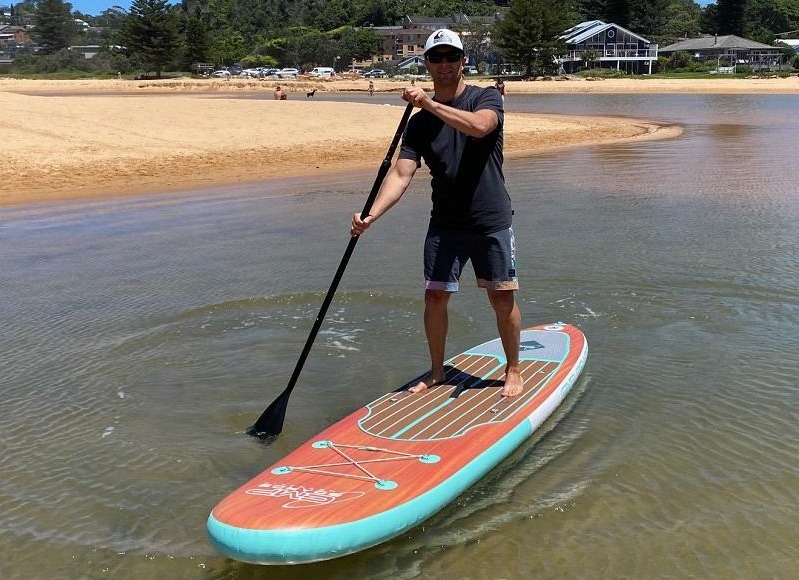
Board Versatility
As a beginning paddle boarder, you probably don’t know what kind of paddle boarding will interest you the most yet. So you need a board that’s versatile enough for anything from traditional recreational paddle boarding to stand-up paddleboard yoga. Any board that’s labelled as a “Recreational Paddle Board” or an “All-Around Paddle Board” should be just the type you’re looking for. Our whole range of SUP Boards fit this category.
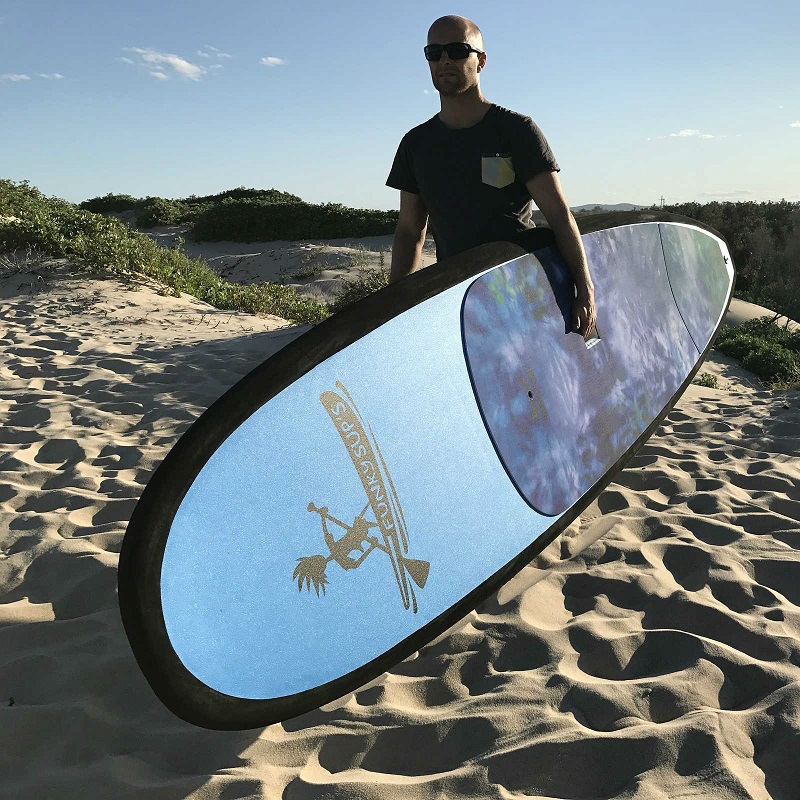
Popular Beginner Paddle Boards
We have some great Beginner Paddle Boards with many options. CMP Boards Australia and Funky SUP Boards are particularly popular among beginners: These 3 are Perfect Options – Epoxy, Soft Top and Inflatable.
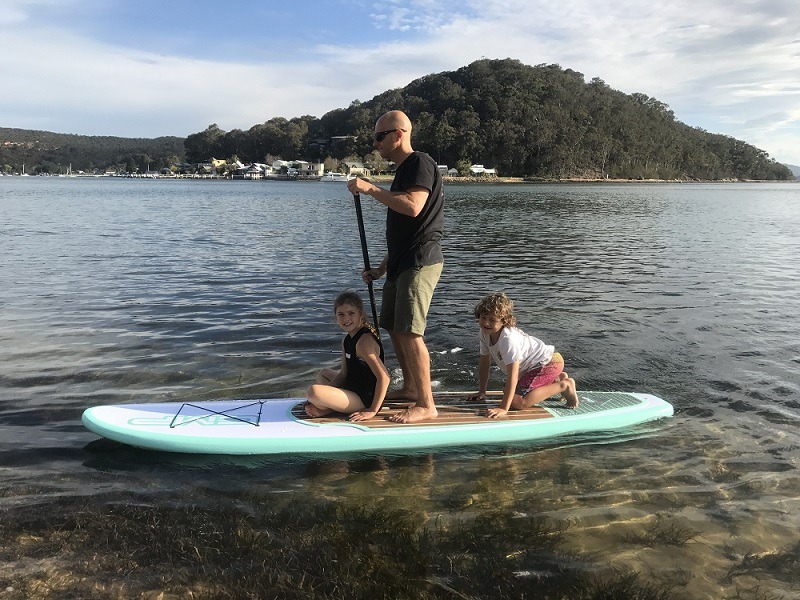
In Summary
Paddle boarding is a great way to enjoy a day on the water, even if you’re just a beginner. If you get a beginner paddleboard that’s stable and versatile, then you should find paddle boarding to be pretty easy to learn.
More information can be found in a blog we posted back in 2015, Choosing the Right SUP.
